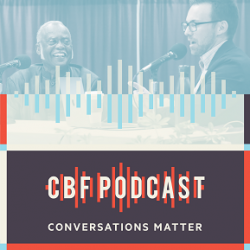By Christopher C. Moore

Like many others, I have wrestled with a host of emotions since Charlottesville. Sadness, that protests resulted in the heartbreaking loss of life. Discouragement, that race relations seem to take two steps backwards for every one step forward. Anger, that white supremacy appears alive and well. Frustration, that efforts to remove Confederate symbols only gain momentum in the wake of tragedy, whether it be in a Charleston church or on the streets of Charlottesville. Yes, a lot of emotions, but surprise wasn’t one of them.
For the past few years I’ve studied the career of 19th-century Baptist minister, J. William Jones. Having served as a Confederate chaplain during the Civil War, Jones anointed himself the veritable high priest of Lost Cause religion — an orchestrated campaign to defend the Confederate cause, justify Confederate defeat, and venerate Confederate leaders.
He also saw with near-clairvoyant clarity the postwar “attacks” to which his beloved South would be subjected. As a result, he unfolded the road map that Lost Causers would use the for the next century, so infusing the popular imagination with Lost Cause mythology that he accomplished in print what the Confederacy had failed to accomplish in war: Southern victory.
To understand exactly how bone-deep this mythology permeates our conversations, consider one of the common arguments for not removing Confederate monuments — that to do so would be erasing history. Anticipating this discussion, Jones crafted certain safeguards. Take, for example, how he publicized the correspondence of Robert E. Lee. For decades, historians like Thomas Connelly have known that Jones published altered versions of Lee’s letters. In Jones’s 1874 and 1906 opuses on the general, Jones cunningly removed segments of letters (using no elision marks) in which Lee discussed slavery. In an 1858 letter, Lee wrote of putting insubordinate slaves in jail. Jones cited only the most innocuous parts of the letter, euphemistically referring to the excised discussion of slaves as “family matters.”
Jones employed a similar surgery on an 1862 letter, completely glossing over sections in which Lee referenced his inherited slaves. Perhaps Jones overlooked the 1860 letter in which Lee begrudgingly admitted his need to buy a servant? Based on Jones’s record, it is likely he scuttled the correspondence altogether.
If such a 19th-century copy-paste job is not erasing history, then what is? Ironically, those reinstating these deleted story-lines are now accused of sanitizing history. So successful was Jones and his ilk that this antiseptic narrative was codified in hagiographies and school textbooks (yes, Jones wrote one of those, too).
Eventually came the monuments, which were for white Southerners hard-fought trophies. For many others, however, these markers were a haunting reminder that the Lost Cause was winning. Just like that, white Southerners’ carefully doctored version of history had literally been carved into stone.
But if Lee’s monuments are to be removed, what’s to be done with monuments to other slaveholders like George Washington?
Jones saw that coming, too. He bent over backwards to cast white Southerners as the heirs apparent to the founding father’s legacy, and to make Lee and Washington virtually indistinguishable. Jones exploited Lee’s ties to the Washington family, and while many of these connections were factually true, they were also misleading. To Jones, Lee had carried on the Washington tradition of “rebelling” against tyranny. After all, who but Washington himself graced the seal of the Confederacy?
Thus it should surprise no one that in public discourse today, we haven’t really figured out how to sever the legacy of the slavery-defending Lee from the slaveholding Washington. We have Jones and the Lost Causers to thank for that. Lost Causers continued the wartime campaign to tether the two generals so closely that we could no longer see one without seeing the other.
Is the Lost Cause still winning? If we are still asking about the differences between a monument to Lee and a monument to Washington, then in some ways, yes.
Robert Penn Warren was correct to observe Southerners’ “fear of abstraction.” Perhaps the monument controversy is a reflection of this fear. After the Civil War, defeated Southerners came to imagine a South without a Confederacy, or one might say, a Southern soul without a Confederate body.
To combat this fear of disembodiment, white Southerners located Southern identity in leaders like Lee, “Stonewall” Jackson, and Jefferson Davis. For Jones and others, these figures were the tangible representations of Christian goodness and divine favor. In a very real sense, these Confederate icons served as incarnations for a disembodied South. Today, many white Southerners see Confederate monuments in much the same way. Many of these individuals are afraid that being “Southern” has been reduced to a punch line — a funny way of talking or a backwards way of thinking. The monuments, for them, tell a different story.
The problem, however, is that the very monuments that embody white Southerners necessarily disembody people of color. For 150 years, white Southerners have tried to skirt or nuance this realization, acrobatically abstracting Southern ideals from the nefarious ends to which those ideals were employed. Like it or not, those ideals not only allowed for the disembodiment of African Americans, they required it.
The presence of Confederate monuments in public squares is a tacit demand that we dismiss the bodies, families, wills, and dreams of African Americans — the same kind of disgrace perpetrated against over four million of our brothers and sisters on the eve of the Civil War.
I’m not sure how much longer the Lost Cause will keep winning. I’m also not sure how long religious folk — folk like J. William Jones — will continue melding the “virtues” of the Confederacy with the truths of Christianity. You would think the we, of all people, would appreciate the value of incarnation. Shockingly, many of us continue — whether knowing it or not — to perpetuate the disembodiment of people of color, and instead look for the locus of virtue in carved stoned and burnished bronze. As long as we do that, the Lost Cause will never be lost.
Christopher C. Moore serves as Instructor of History at Catawba Valley Community College in Hickory, N.C. His current project is a book focused on the interface of religion and memory in the postbellum American South.
Note: The views expressed here in columns and commentaries are solely those of the authors.
Interested in writing for CBF at Patheos? Submit your column idea to CBF Communications Director Aaron Weaver at [email protected].










